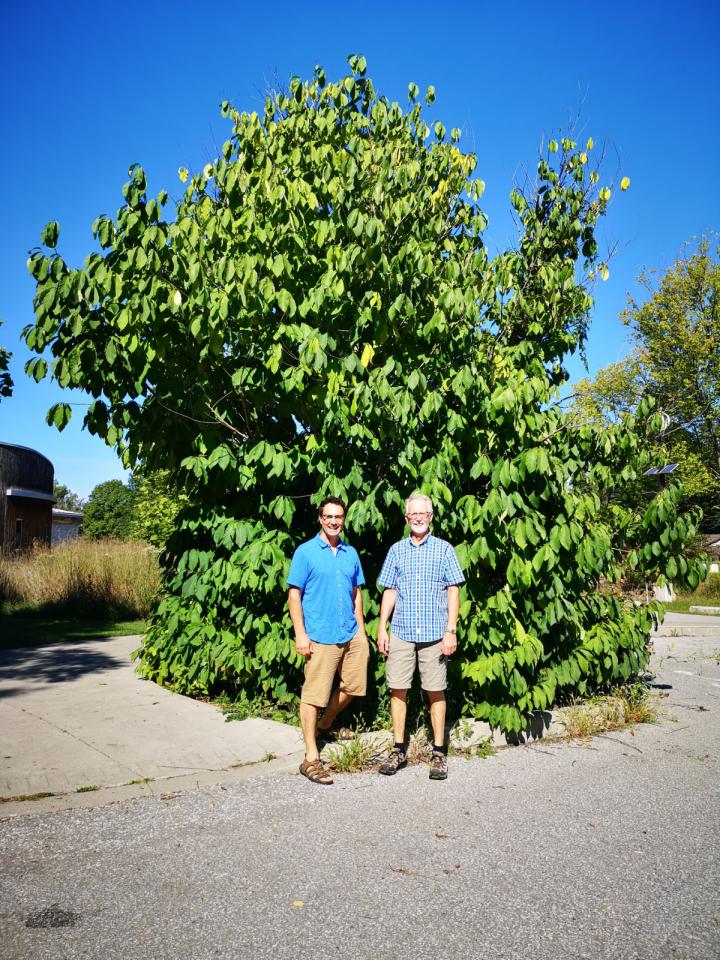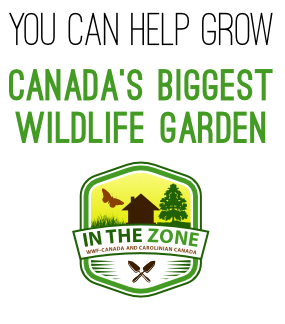Care and stewardship of these trees is an important step in moving forward to help recover populations, not just of this unique species, but of many others as we see and hear the desire of many to help recover our landscape.
Thank you for offering to step forward to play this important role. Below is some more information on caring for Pawpaws.
Pawpaw Planting
- This species prefers to be planted in the fall. Plant them as soon as possible, in an area that receives at least 50% sunlight during a given day.
- They need to be planted within 10 feet of each other (to ensure cross pollination), and they are not impacted by any nearby Black Walnut trees.
- They prefer relatively moist soils that are well-drained. If you are on the edge of a watercourse or wetland make sure that it's flowing and that there's no stagnant water resulting in water being constantly around the roots. If this is your habitat make sure the trees are high enough away from sitting water.
- Pawpaws like a high organic content, meaning if you are near sand or gravel you will have to augment the whole with some richer soil when you're planting the tree.
- It is recommended to put a little tree guard, a white piece of plastic or other material around the delicate trunk of the tree, right up to the first set of leaves. This isn't required, but it may help if a rabbit or a deer comes nearby and decides to chew. Some chose a small fence around the entire tree.
- As is the case with most trees, put the Pawpaw in the hole and cover up the soil to where the currents soil line is with the trunk of the tree. Compress the soil around the tree so much so that if you tug gently on the stem of the Pawpaw It won't pull it out of the ground. It wouldn't hurt to have some mulch or a thin layer of wood chips over top of the root area.

Size Considerations
It may take some time, but the Pawpaw can grow in excess of 15' or 5.5m. Have a look at the shot of Steve and me (above) in front of the Pawpaw tree cluster at Ojibway Prairie in Windsor. These trees (5 or 6 growing in a clump) are almost 25 years old.
Water Them Every Day
Since your Pawpaw is in a well-drained area, there's no need to be stingy with water. Water well every morning for at least the first couple of months but not late into the fall as water tends to sit in the ground more so.
Genetics
The seed source of Pawpaw trees we gave away is from the West Lorne area, a small community about a half an hour's drive west of London Ontario. Geographically, these are right in the middle of the Carolinian Zone. If you purchase Pawpaw trees, we suggest that you buy native Pawpaws to plant nearby these ones. If you're buying some variety online or a source of trees that you know isn't from Ontario, please plant them at least 10 ft away from any native trees that may have received. This is to ensure the genes of these trees will stay similar to what we can find in the wild in Southern Ontario.
Future; What To Expect
The first year or two, the tree won't get that much larger, as they are putting their energy into expanding their roots. It's years 3, 4 and 5 that they will mature and by year six or seven you should be having flowers maturing into fruits provided both trees are still alive and flowering at the same time. The Green Bottle Fly is the pollinator of this species. See photo attached. It helps to have other flowering plants around the Pawpaw, like this Dogbane depicted in this photo with the Green Bottle Fly. In this manner, flies will be already in the area when your Pawpaw trees start to flower.
Program Expansion
If you have purchased or adopted trees and they didn’t survive, look at the above list of suggestions and see what might be ‘off.’ This just happens sometimes. Two nurseries that we know that sell native Pawpaws include Native Trees and Plants Nursery in Amherstburg Ontario and St. Williams Nursery and Ecology Centre in St. Williams Ontario. You can get the contact information by Googling both of these sites. And, there probably are some other nurseries that sell them as well.
Just a day before we started the Pawpaw Parade was the last day of a huge Pawpaw Festival in Ohio. Maybe plan to go there next year? ( https://www.ohiopawpawfest.com/) We'd love to encourage you to expand not just your Pawpaw knowledge and collection, but we have many rare and wonderful trees and other plants in need of your support in Carolinian Canada.

Staying In Touch
We'd like to keep hearing from you. When we do a round two, or more, any Pawpaw seeds you may have would be valuable to help us and the Pawpaw expand across it's natural range in Canada. Feel free to write stories and send them to us, especially through our www.inthezonegardens.ca web site.
In the Meantime
We are still answering hundreds of emails. Please check out our FB community (https://www.facebook.com/caroliniancanada/) to ask any further questions which in the short term, may take some time to be answered. I will be sharing many photos of the Pawpaw Parade 2019, shortly on Facebook. Many of you will recognize the photos!
Charitable Mission: Recover the Carolinian Forest Zone
I'd just like to remind you that Carolinian Canada is a registered charity, as is WWF Canada. While we receive some grants, donations are critical to help us deliver our programs. Please help spread the word about the work we do to help us stay relevant, strong and vibrant for years to come. (https://caroliniancanada.ca/contribute).

Qualify for Pawpaws
Learn more about In The Zone at our joint web site with WWF Canada - www.inthezonegardens.ca - and become a part of Canada's Biggest Wildlife Garden today!
Tracking your site helps Carolinian Canada and World Wildlife Fund Canada immensely. This data is used to help report on the ground activity, which helps strategically direct new actions and expand our programs where they are needed most.

